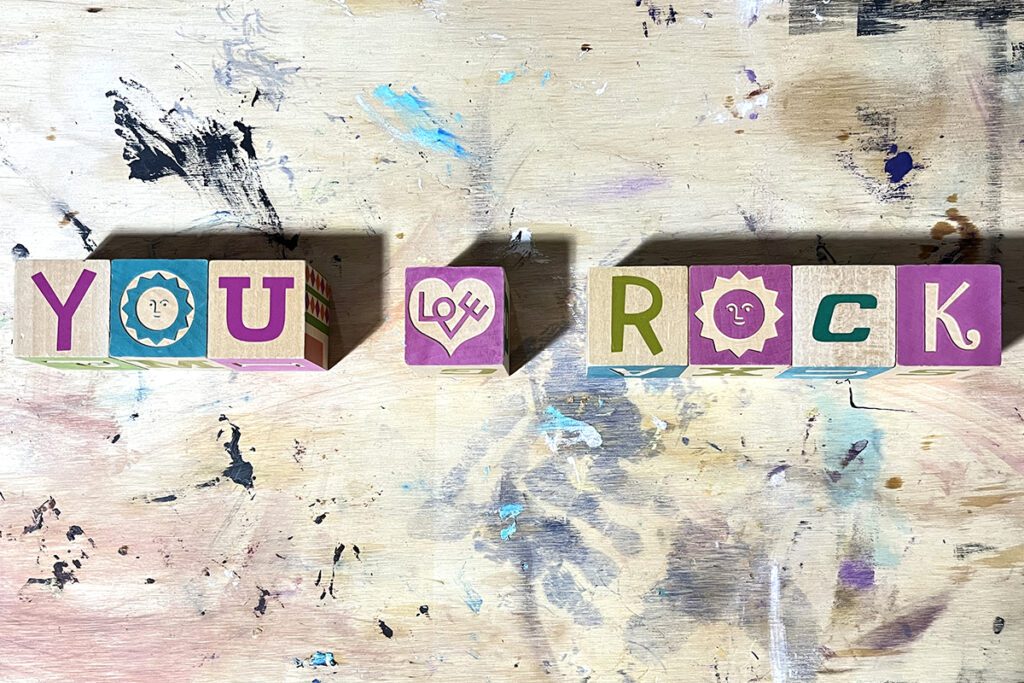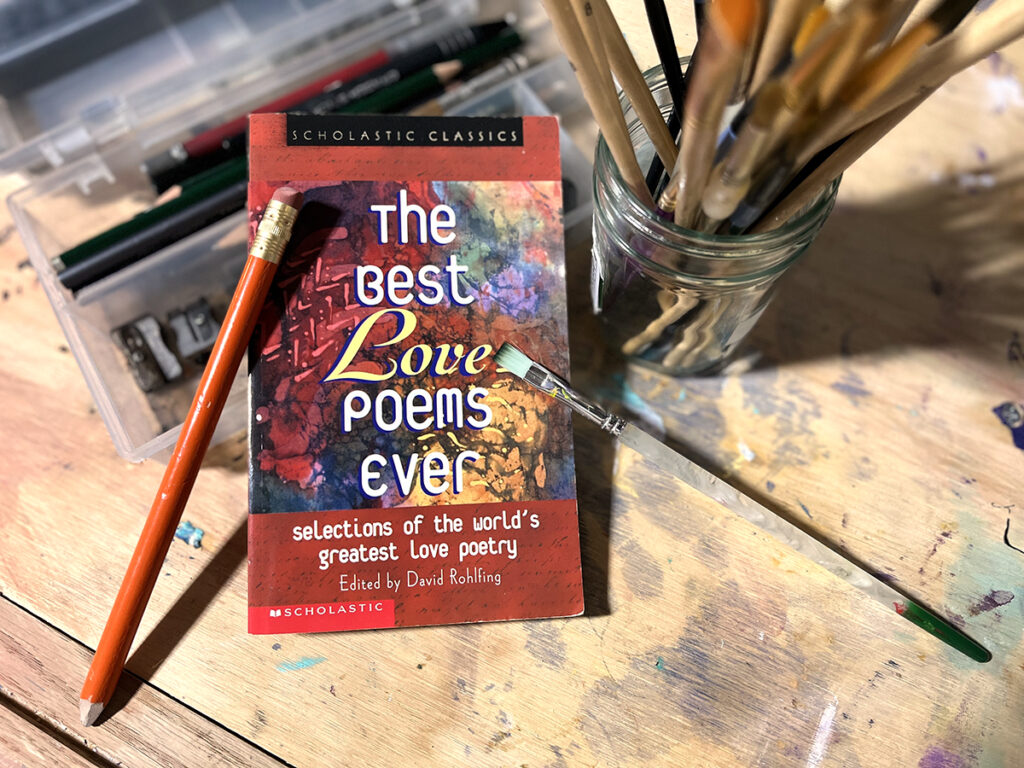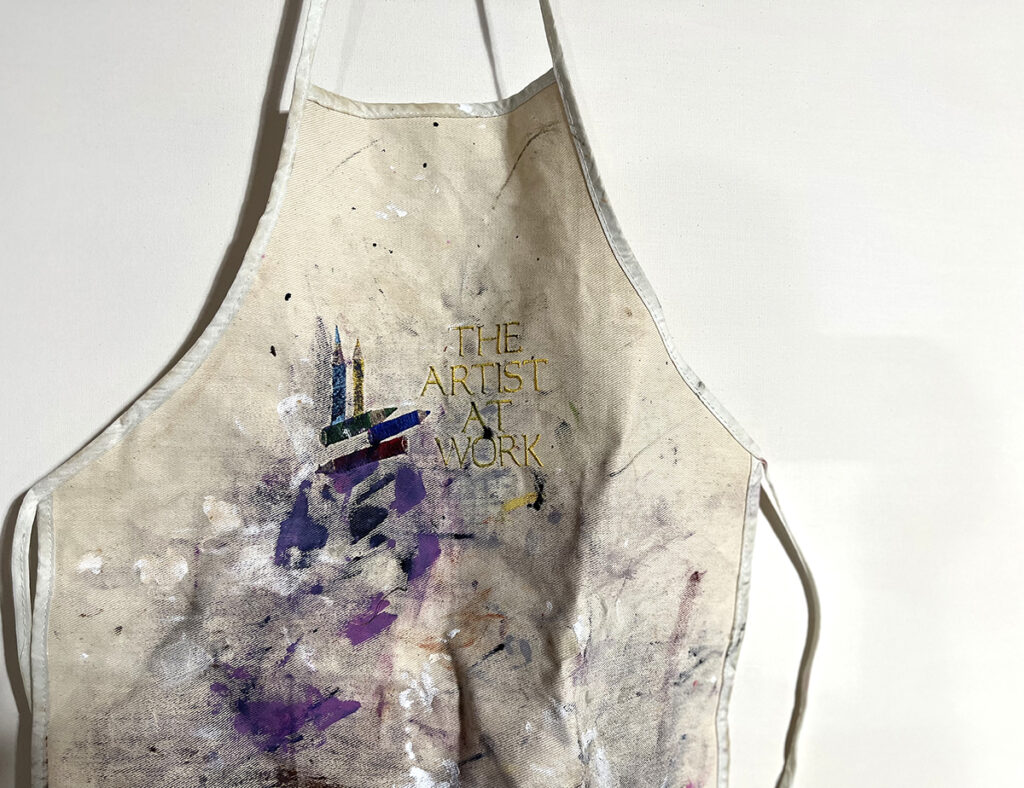Being an art teacher is an important and much-needed job. The visual arts are our passion; seeing eyes light up when students discover something new in the art room is our calling.
Unfortunately, it may not feel like it’s an important job because teachers are constantly under the microscope with evaluations and the current teacher shortage. Because of this, teachers may feel they need to “prove” their worth, day in and day out. If left unchecked, this stress can lead to teacher burnout, which continues the cycle of the shortage.
In this season of love, we are here to remind you why your students can’t live without you. We hope it gives you the little reminder you need to keep you motivated. You matter, and you are doing a great job!
Let’s look at seven reasons why we love art teachers and why you are important.

1. You bring a creative perspective.
Art teachers, by their very design, look at things from an artistic lens. You view problems as having more than one solution, which can lead to innovation. Having an art teacher on staff means always having fresh takes, off-the-wall thoughts, original ideas, and the ability to take risks. Not to mention, you decorate the school or facility with amazing artwork!
2. You are an advocate of the arts.
During hardships, art programs may downsize or close down. Financial reasons are the number one reason cited for this detrimental move. But this mode of thinking is very counterintuitive because having an art program can elevate a school district’s social and political status.
Fortunately, we are equipped to be the voice of the arts! Many schools, especially in the U.S., are largely funded locally through property tax. That means voters or the local community have a large sphere of influence on keeping schools funded. Gaining the local community’s support and showing them where their money is going can be fruitful. Continue to host community-centered art events, submit student work to local contests, and create art to beautify and benefit the community. Doing what you do best allows you to be a valuable bridge between your school and your community.
3. You provide a hands-on curriculum.
Art in and of itself is a hands-on curriculum. We know a hands-on curriculum has many benefits for students.
Here are a few benefits you can share as you advocate for your program:
- Brings people closer together, promotes brain development, and lowers stress levels.
- Keeps students in school and improves their academic performance.
- Increases cognitive ability, problem-solving, observation, and decision-making skills.
- Prepares students for the 21st-century job market and boosts their imagination and affective abilities.
How many times has a new educational strategy come out, and you say to yourself, “We already do that in art with the students every day.” It stands to reason that, no matter what trends are going on elsewhere in education, art teachers will still be teaching students to work with their hands, reaping the many benefits above.

4. You teach a favorite subject.
For many students, art is their favorite subject and class. Where else can you discuss and draw unicorns flying on a rainbow in a completely safe classroom space? Your class may be the most exciting part of the day or week for a child. Take pride the next time a student says they are bummed to have their dentist appointment on art day.
5. You are a favorite teacher!
Even if art isn’t their favorite subject, you are often still their favorite teacher. A lot of times, your passion for teaching and the arts exudes in your personality. Take the time to flaunt your true self, unabashed and original, and it will catch on with the students. This can be your style of dress, how you teach, the jokes you make, or the hobbies or interests that you draw into the classroom.
6. You connect with challenging students.
Believe it or not, all of the aforementioned ideas can help you connect with even the most difficult students. Students need an ally and a way to express themselves. Art can communicate ideas, spark imagination, and provide a different perspective for students. It allows them to explore their ideas physically and mentally through drawing, painting, sculpting, and more. Their art then becomes a voice that can communicate ideas and help them work through the valleys of life. Through all of this and making a true connection with a student, you may be able to “tap” into children who otherwise have a difficult time in a more “traditional” academic setting.
7. You introduce engaging media.
There are so many interesting mediums in the art room that go beyond crayons and colored pencils. Because many students do not get the opportunity to use neon tempera paints, earthenware clay, or a 3D printer on a daily basis, the art room can become a magical and special place. Even if students do have advanced art supplies at home, the art room allows them to loosen up in a way they may be unable to at home. There is a contagious buzz of excitement when students creatively feed off of each other in the studio. Plus, the art room is designed for messes!

While your job may be messy, busy, and challenging, it is an honor and privilege to do what you do. You have the chance to inspire the next generation and be a part of their lives. The work you do as art educators matters, the skills you teach are valuable, and the memories you forge along the way are unforgettable. We hope this list was a good reminder of all the things there are to love about visual art and your role in young artists’ lives. You are important, and we can’t live without you!
If you are looking for more resources to help you fall back in love with what you do, check out the ones below:
- 6 Reasons Why Being an Art Teacher Post-Pandemic Is Still the Best Job Ever
- 26 Fantastic A-to-Z Reasons to Be a Thankful Art Teacher
- 20 Reasons Teaching Elementary Art Is the Absolute BEST!
- What Kind of Art Teacher Are You? Redefining Your Art Teacher Identity
- 20 Strange, Amazing Skills You Will Develop as an Art Teacher
What do you love about being an art teacher?
When did you know you wanted to be an art teacher?
Magazine articles and podcasts are opinions of professional education contributors and do not necessarily represent the position of the Art of Education University (AOEU) or its academic offerings. Contributors use terms in the way they are most often talked about in the scope of their educational experiences.





